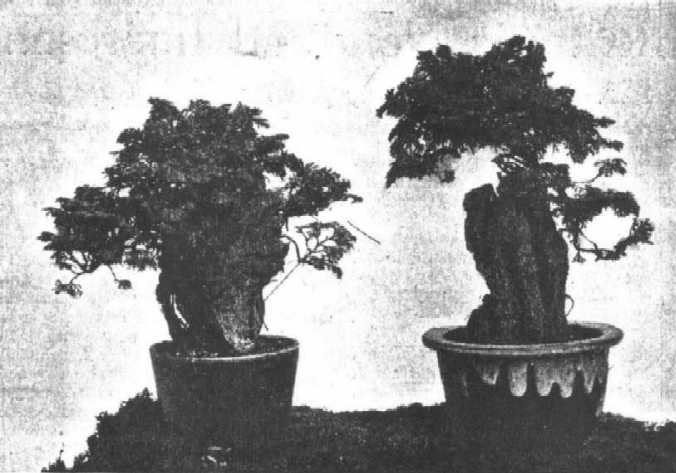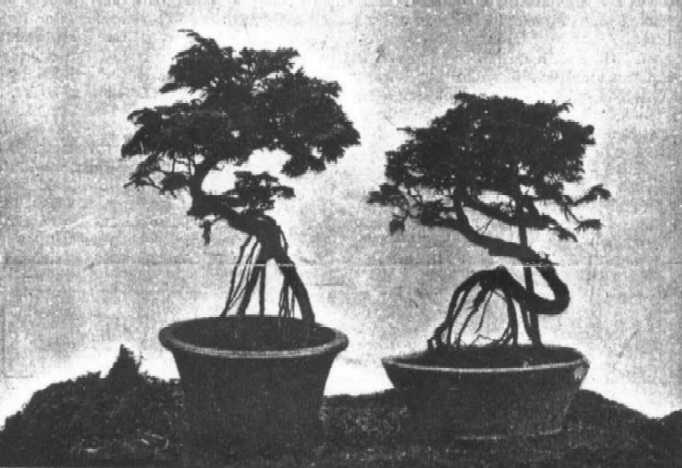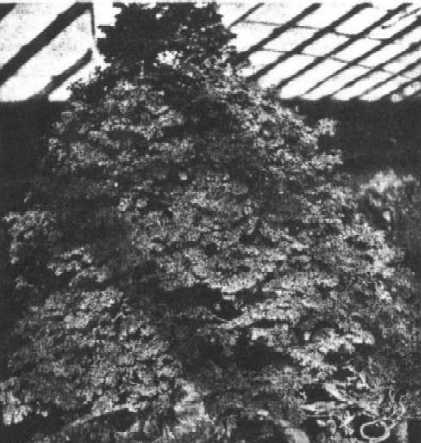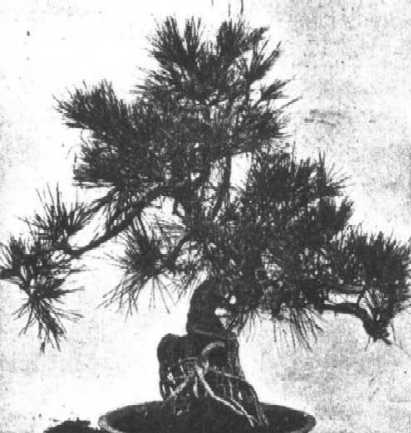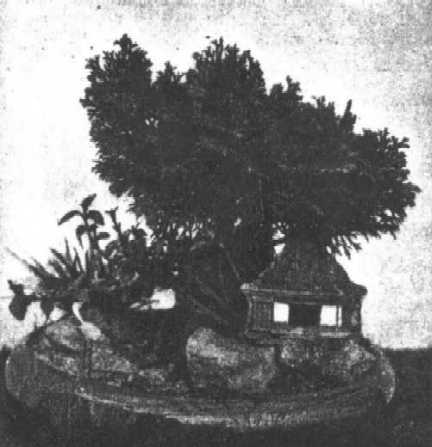| "How Japanese
Dwarf Trees Are Raised" (1921):
The little Japanese trees exhibited
in the windows of the better grade Japanese novelty shops never fail to
excite considerable interest, because they are so unusual. In fact,
in Japanese horticulture the art of landscape gardening on a miniature
scale plays as important, if not a leading rôle. A village
or a single home, surrounded by beautiful country, will be formed within
a plot of ground a few yards square by the Japanese artisans. A river
with its bridges, a lake with tiny ships on its silvery surface, roads,
gardens, fields – all these features are to be found in the more pretentious
Japanese miniature works. Hence it is not surprising to learn that
the Japanese, in order to carry out their miniature landscape gardening
with the utmost realism and fidelity, have had to raise dwarf trees for
this purpose.
So the custom of dwarf trees has
become an established one in Japan, some of these trees attaining the age
of 200 years. The whole system of culture of these tiny trees may
be summed up as the reversal of nature's method. It really consists
not in the survival of the fittest, but rather in the survival of the unfittest,
so to speak. A poor, weak seed is usually chosen and planted.
As soon as it has attained some growth, the leading shoot is trimmed off.
The little plant then grows two other shoots, and these are carefully watched.
When one shoot exhibits a strength that is vitally greater than its fellow,
it is at once cut off and the weaker shoot left untouched in order to form
the future dwarf tree's main stem or trunk. This system of trimming
and cutting is followed punctiliously. Water is seldom used – only
in such small quantities as to keep the little plant actually alive.
The tree is kept in a pot too small for its full development and the roots
are constantly pruned. The shoots are carefully trained and bent
to follow the growth of a large tree.
All Photos. Copyright, Keystone View Co. |
